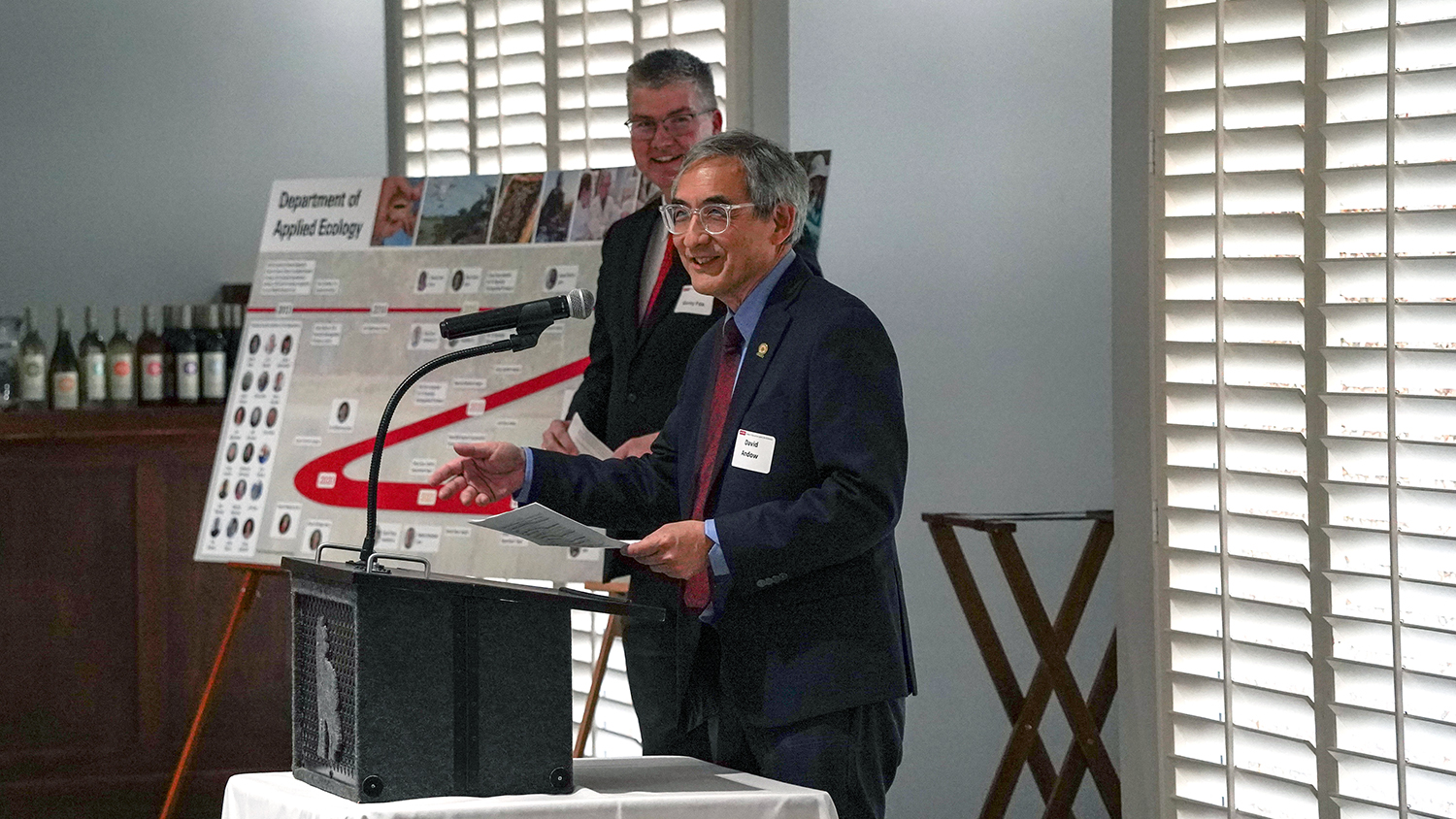CALS takes next steps in improving innovation and efficiency
The College of Agriculture and Life Sciences’ organizational chart will undergo major changes July 1, as the college’s departments, centers and programs align around four focus areas: Plant Systems, Animal Systems, Human and Resource Systems, and Food, Biochemical and Process Systems.
The changes are designed to allow for more strategic, interdisciplinary decision-making across the college, according to a memorandum Dean Richard Linton sent to college faculty, staff, alumni and other stakeholders in December.
In announcing the changes, Linton also shared news that NC State University’s provost Warwick Arden has agreed to help fund 40 new CALS faculty positions over the next four years.
“This is an unprecedented investment and is a real game changer for the work we do, with a lasting impact for decades to come,” Linton noted.
The investment, in conjunction with a new organizational framework, “will better position faculty, staff and administration to think, work and invest more strategically across all disciplines,” Linton said. “This combination will help CALS achieve our mission of interdisciplinary discovery, learning and engagement to create agricultural and life sciences opportunities that benefit our state, the nation and the world.
“It recognizes that while our opportunities are boundless,” he said, “our resources are not.”
The reorganization will reduce the number of departments in the college from 16 to 12. The departments of Entomology and Plant Pathology will merge, as will the departments of Crop Science and Soil Science and the departments of Agricultural and Extension Education and Youth, Family and Community Sciences.
The plan also calls for CALS’ phased divestiture in the Department of Statistics, which is currently shared with the College of Sciences.
This chart illustrates how departments, centers and programs will be organized. Each system will be guided by a CALS associate dean along with a rotating center head or department head.
Linton said that the systems “will provide the needed flexibility for department heads, center directors and program leaders to work more closely together across disciplines.” It will also allow them to develop collective goals and make systemwide budget and hiring recommendations to CALS administration, he added.
Linton and associate deans held two forums in December to outline the changes, answer questions and hear from the college’s faculty, staff and stakeholders. A website at go.ncsu.edu/livingourvision has more information.


